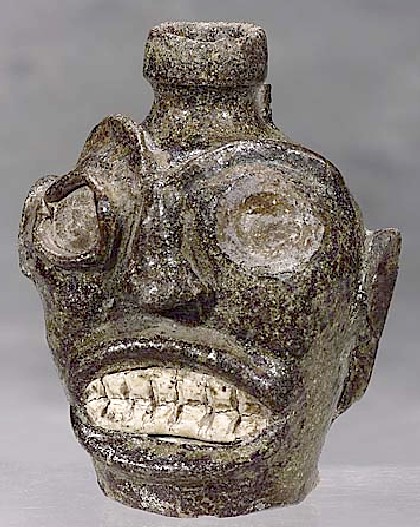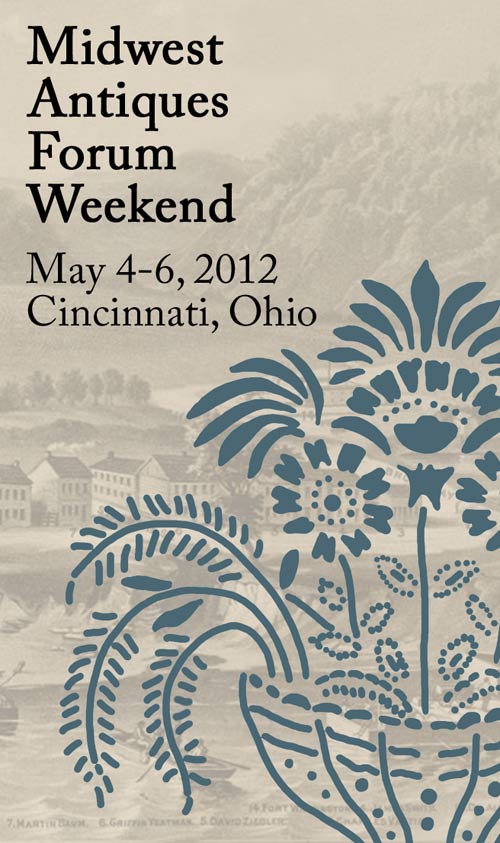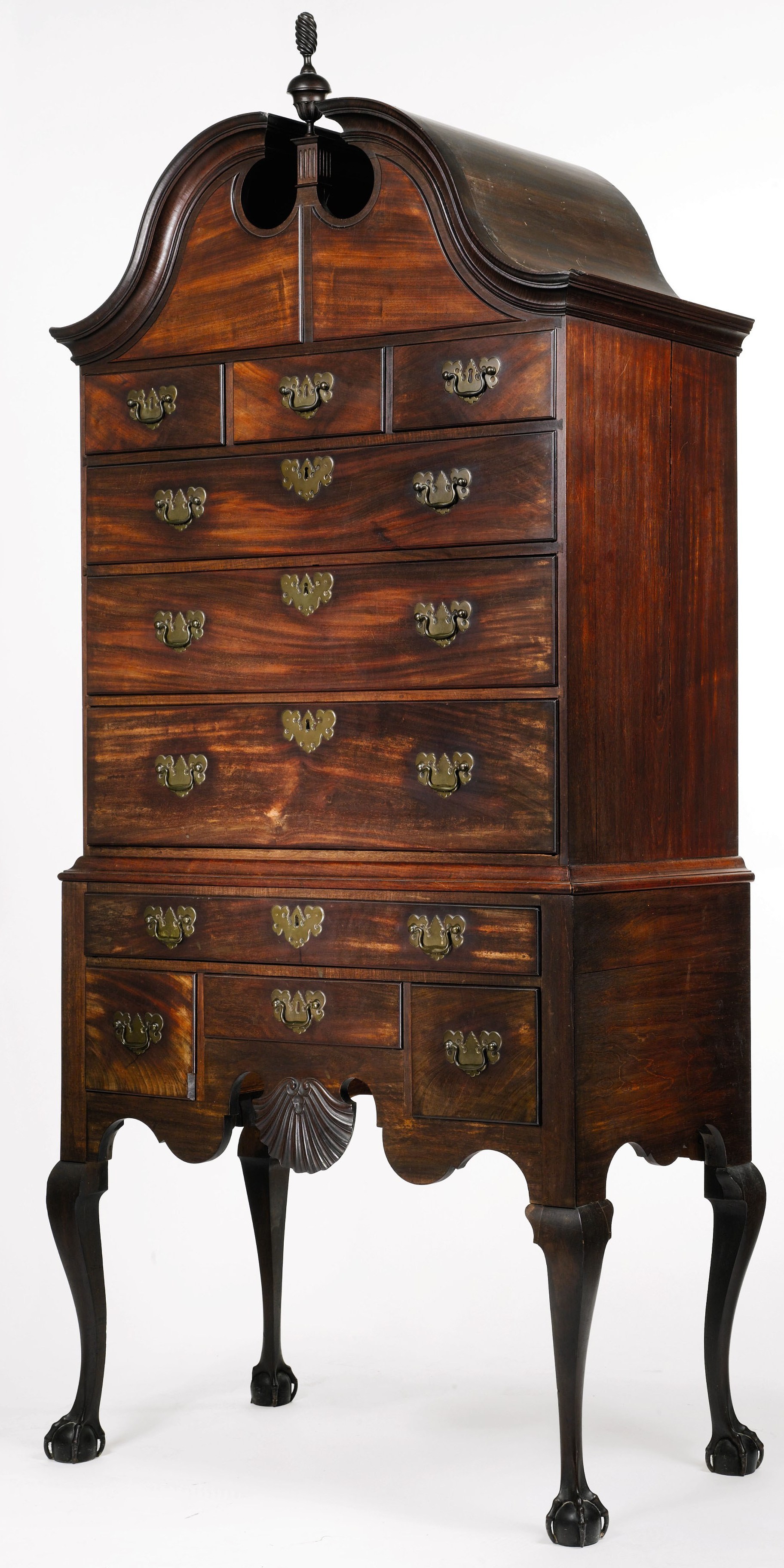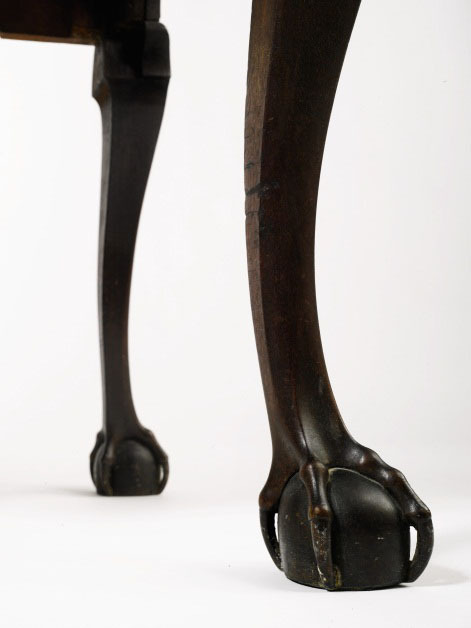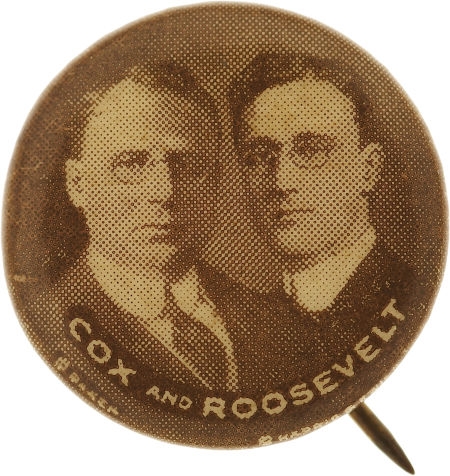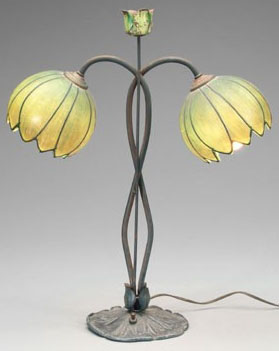Sometimes, I think the impression many people have of antiques is that they’re stodgy or dull, just perfectly crafted boring furniture, which probably goes along with the commonly held view that people in “olden days” were humorless, dour people who stumped around throwing people in the stocks for laughing. In reality, there’s so much whimsy and personality and individuality at work in the world of antiques!
I can’t think of a better example of this than face jugs. As with most nebulous groupings (18th century through modern day, many types of earthenware, molded and applied and painted decoration, etc.) of objects, the history of face jugs is vague. Most theories revolve around three general schools of thought. First, setting aside the myths of craftsmanship that depict a pastoral view of an artisan at work, stoneware manufacturing was really an industry – long hours, repetitive work, dirty conditions. It’s easy to believe that face jugs were just a way to introduce an element of creativity into what was otherwise frequently a tedious job. Another, more apocryphal, theory is that such jugs could be used to store moonshine and other things one might not want children to drink. Tell them there’s a boogeyman in the closet and if they saw a face jug in there, they’d likely believe you! The most likely theory of origin is the strong connection between these jugs and African-American potters and their spiritual traditions rooted in the same cultures that evolved into what we know as Voodoo. These “creepy” or “grotesque” faces would certainly aid in warding off any evil spirits that might be lurking around.
Regardless of the origins, face jugs found their home in the South where potters like B.B. Craig and the Meaders family specialized in crafting them in stoneware. Typically speaking, the majority of face jugs have alkaline glaze, ceramic eyes, and teeth that are often pebbles or broken bits of ceramic material. Prices vary widely, but generally, the most valuable ones are the earlier ones (like the one pictured above), often slave-made, that predate the Civil War and were made in factories like those owned by Col. Thomas Davies of Bath, South Carolina.
-By Hollie Davis, Senior Editor, p4A.com
To search the Prices4Antiques antiques reference database for valuation information on hundreds of thousands of antiques and fine art visit our homepage www.prices4antiques.com

